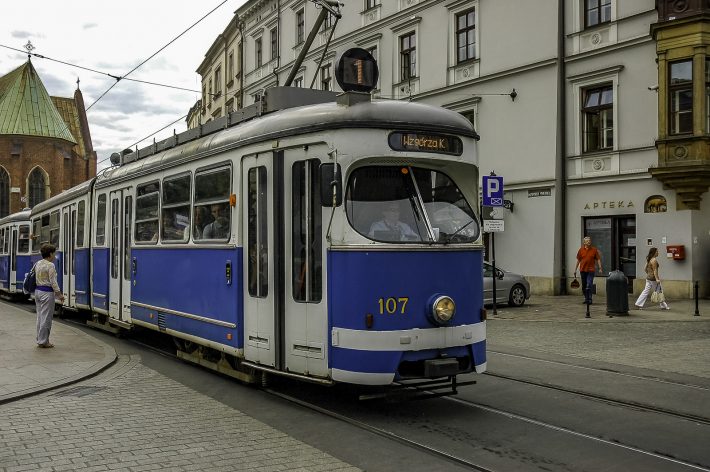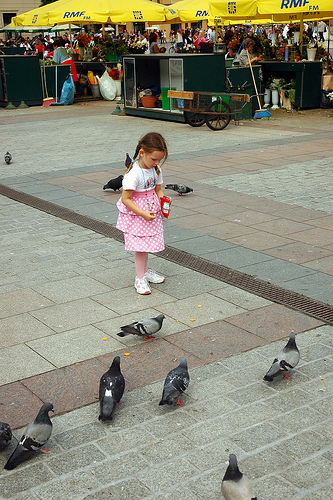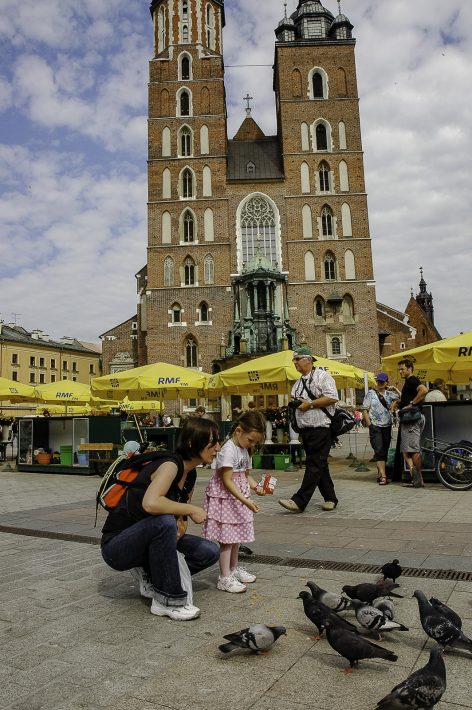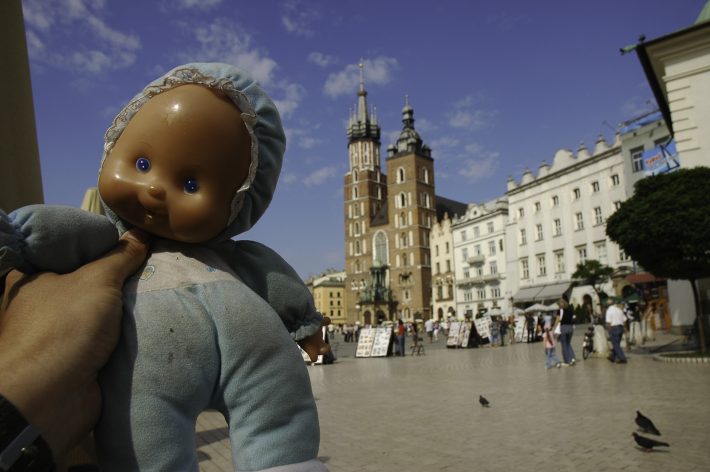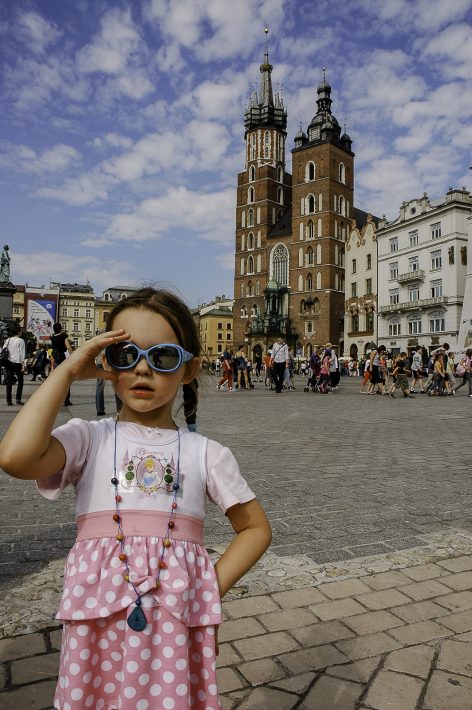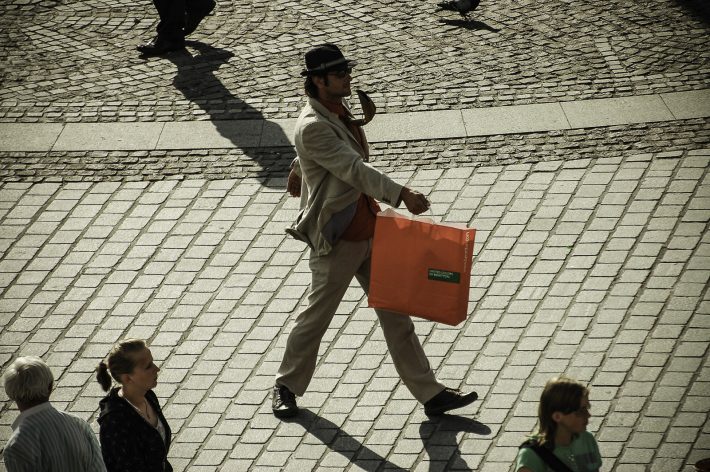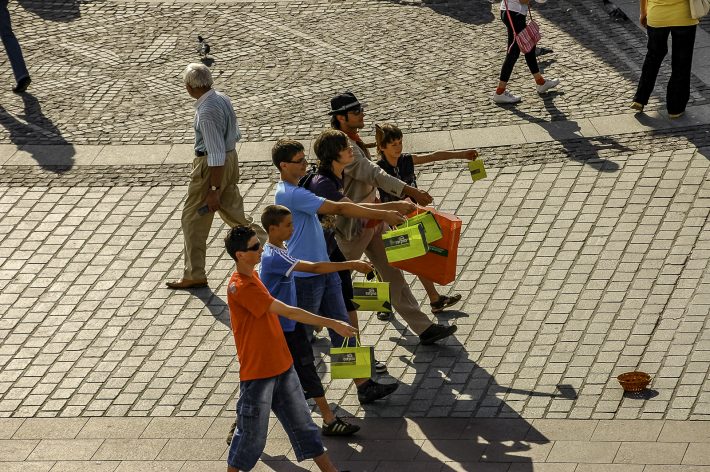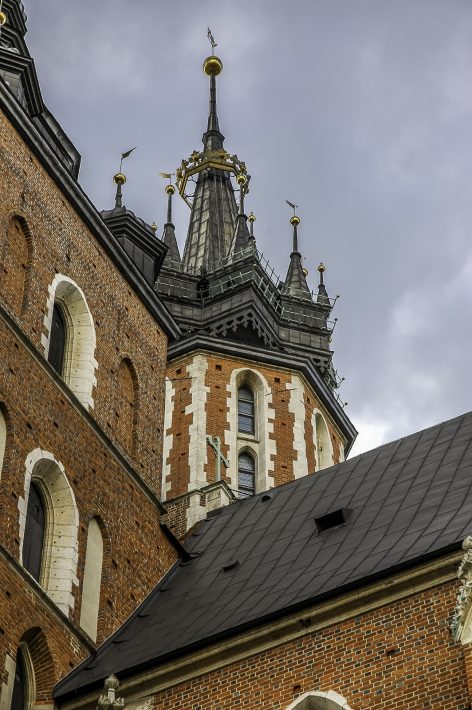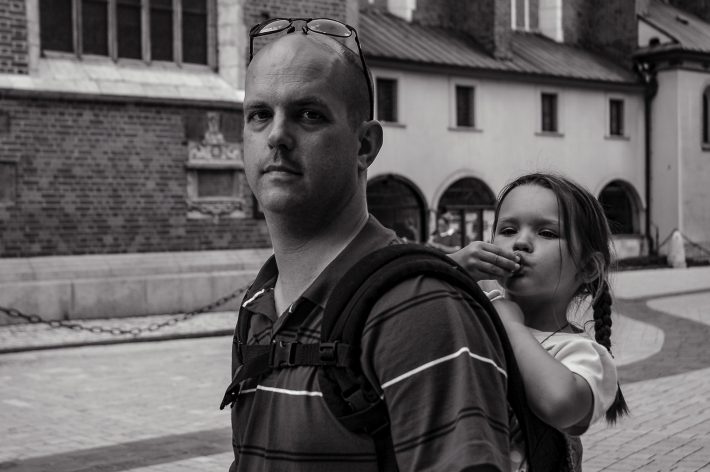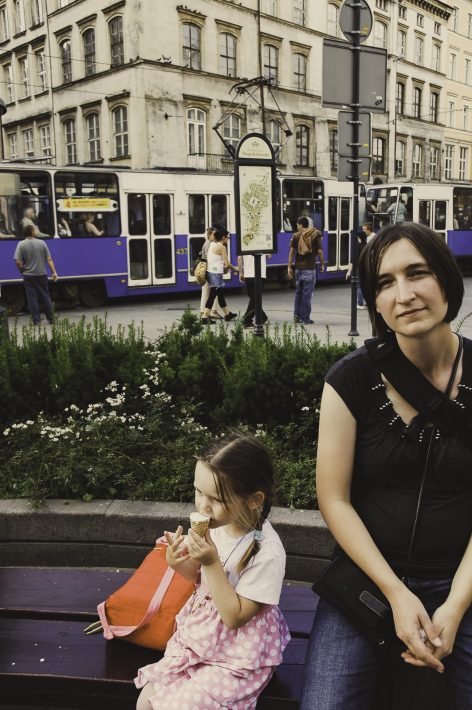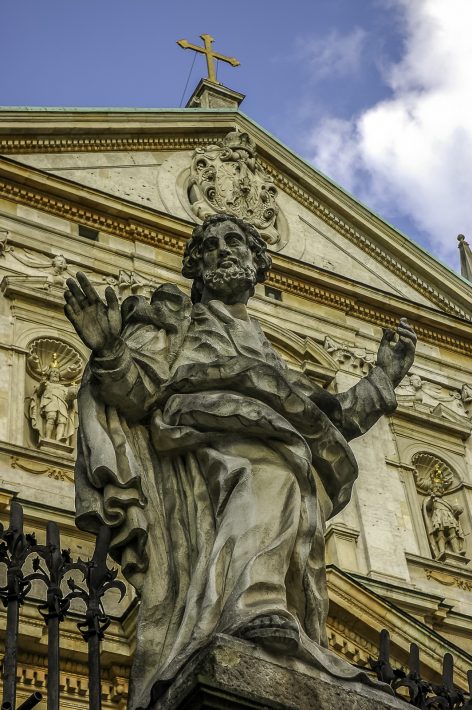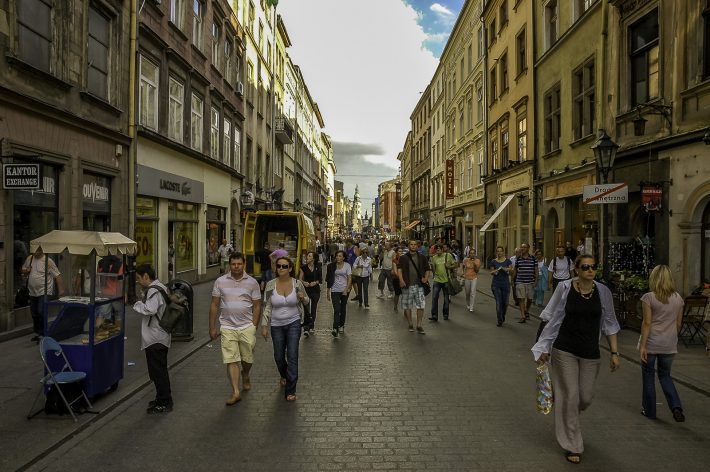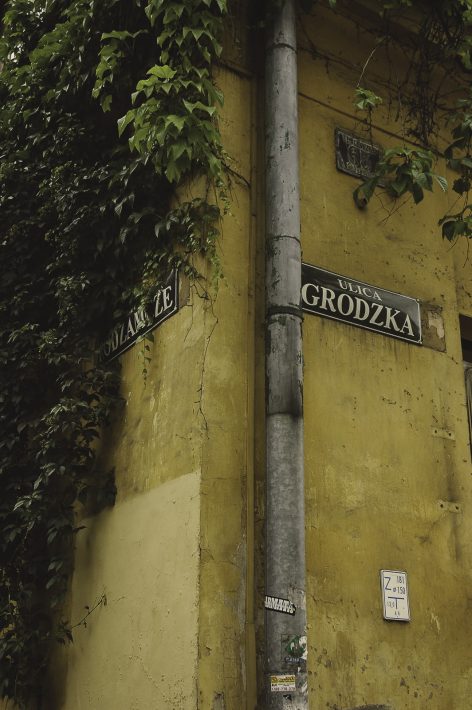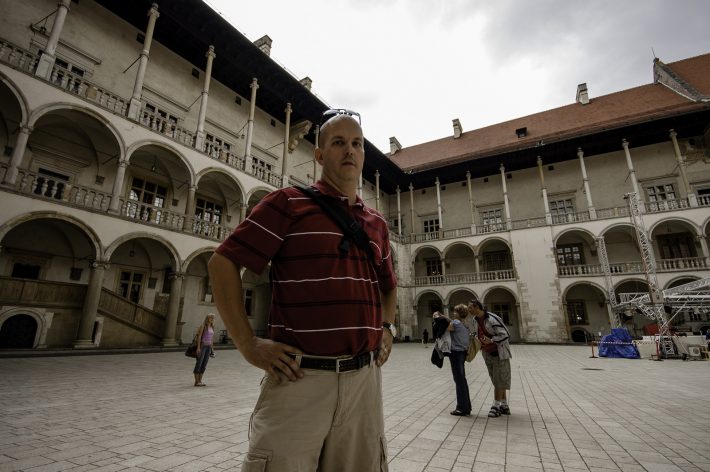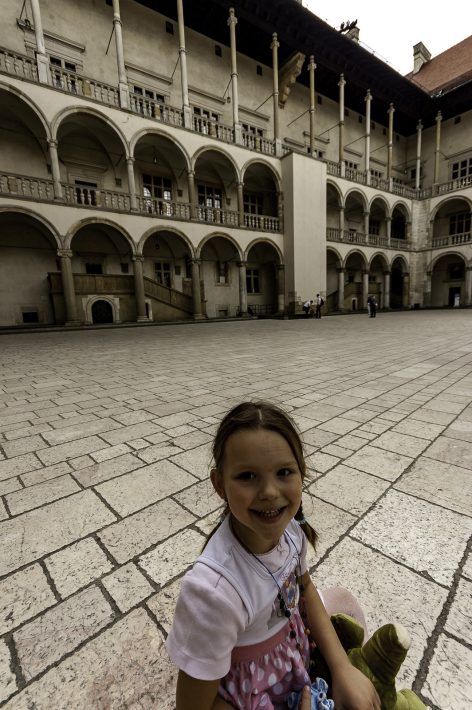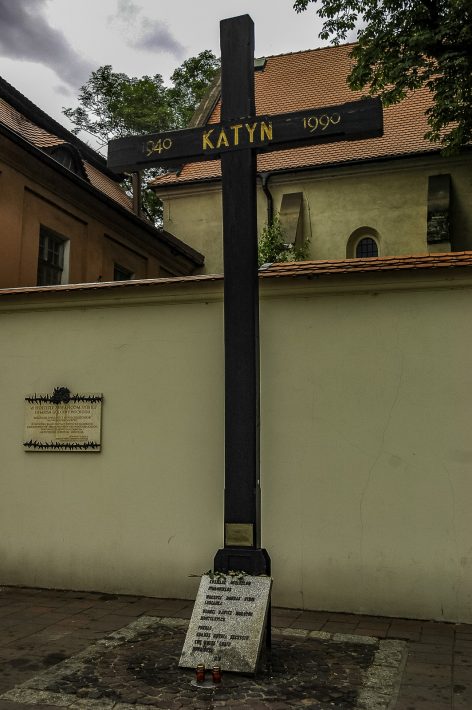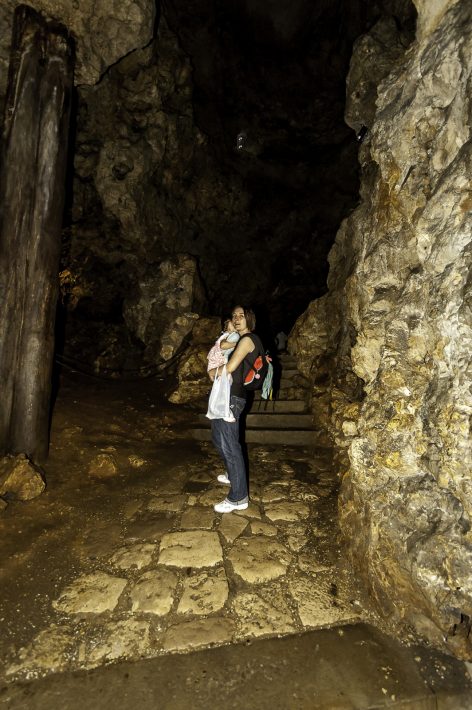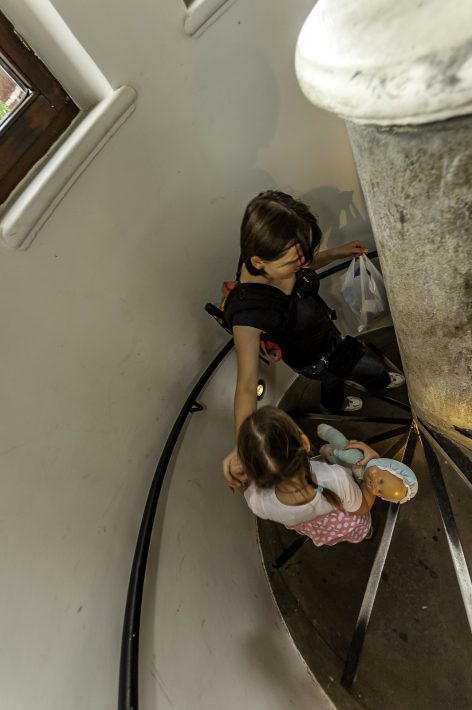From Wawel, we head up ulica Grodzka toward the rynek, looking for food. We find a small restaurant that’s essentially an upscale bar mleczny and sit down for lunch. Nothing special, but good Polish eats — the sign of a good bar mleczny.
Arriving at the rynek, we begin looking for the countless bird seed mongers that traditionally seem to fill the rynek. We can’t find a single one. What’s more, the centerpiece of the rynek, the Sukiennice (Cloth Hall), is closed for renovation, with all the booths moved outside.
It’s not the same rynek.
Still, we have crackers in a backpack, so L wades into the mass of pigeons and begins aggressively throwing crackers at the pigeons.
The result is predictable.
After a few moments, K provides the much-needed assistance. But it seems that cheese crackers are not a favorite of Krakow pigeons. Perhaps there are too many chemicals — after all, what are preservatives? A frightening thought. Maybe we should make our own? After all, how difficult can it be?
It can’t be more difficult than finding refreshment on the rynek for a decent price. It’s something like the airport: cafe owners know that the average person is, at least temporarily, there to stay. Who’s going to walk two blocks to save a few zloty?
And lose such a view? Location is everything, for buyers and sellers.
Given the view, the price might just be worth it. Baby certainly thought so.
The last stop: Empik — something like a Polish Borders Books or Barnes and Noble. Though L has a relatively large library, we’re of the opinion that she can never have too many books. Especially Polish books. And so we arrive in the hopes of loading up on new books. What is L interested in? Disney. The Polish version of the “Princess Collection.”
As K is working to convince L that a Polish “Princess Collection” is entirely unnecessary, I look out the window of the third floor. One of the many street performers begins his act. Relatively original. No face paint, nothing to suggest a clown.
Just someone in a hurry to get home with his shopping. As passers-by stop and imitate, the performer drops the bag, startling observers. He pulls out smaller bags and invites them to join him.
An amusing act, but not the famous Biala Dama. We didn’t see her last year either. We’re not the only ones looking for her.
We sit next to the Basilica of St. Mary for a rest, planning on going inside, when Mass begins and we realize we won’t see the interior this year. Disappointing, but we’re all probably too tired to worry much about it.
The views from the outside are spectacular as it is.
Finally, it’s time to go: the call from K’s brother has come. He and his family are on their way home. Suddenly, we’re in a hurry. Still, there’s always time for a little ice cream.
And a shot of one of the famous statues in front of the Church of Saints Peter and Paul.
A couple of last glances and we’re back at our car.
The spell is broken as we fight our way out of Krakow: aggressive drivers, narrow roads, unexpected detours, and exhaustion all make it more difficult. Next time, perhaps we’ll just buy a small apartment on the rynek.
